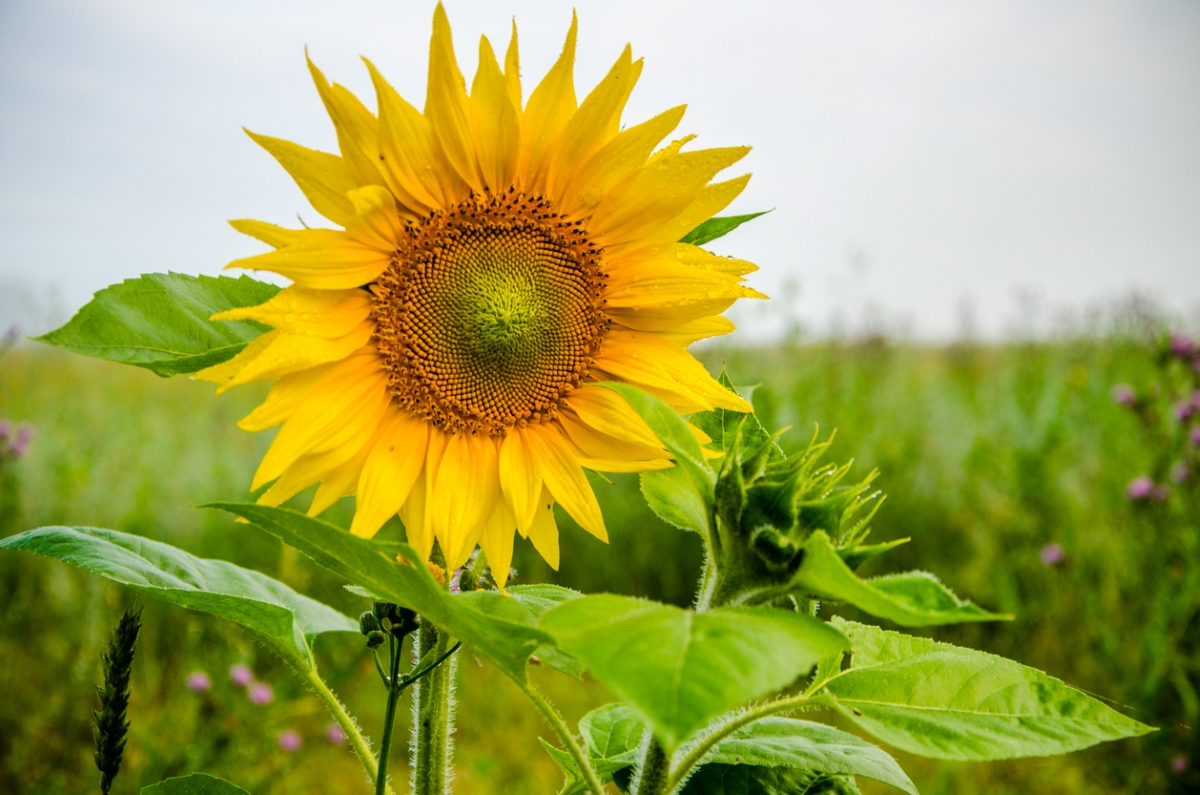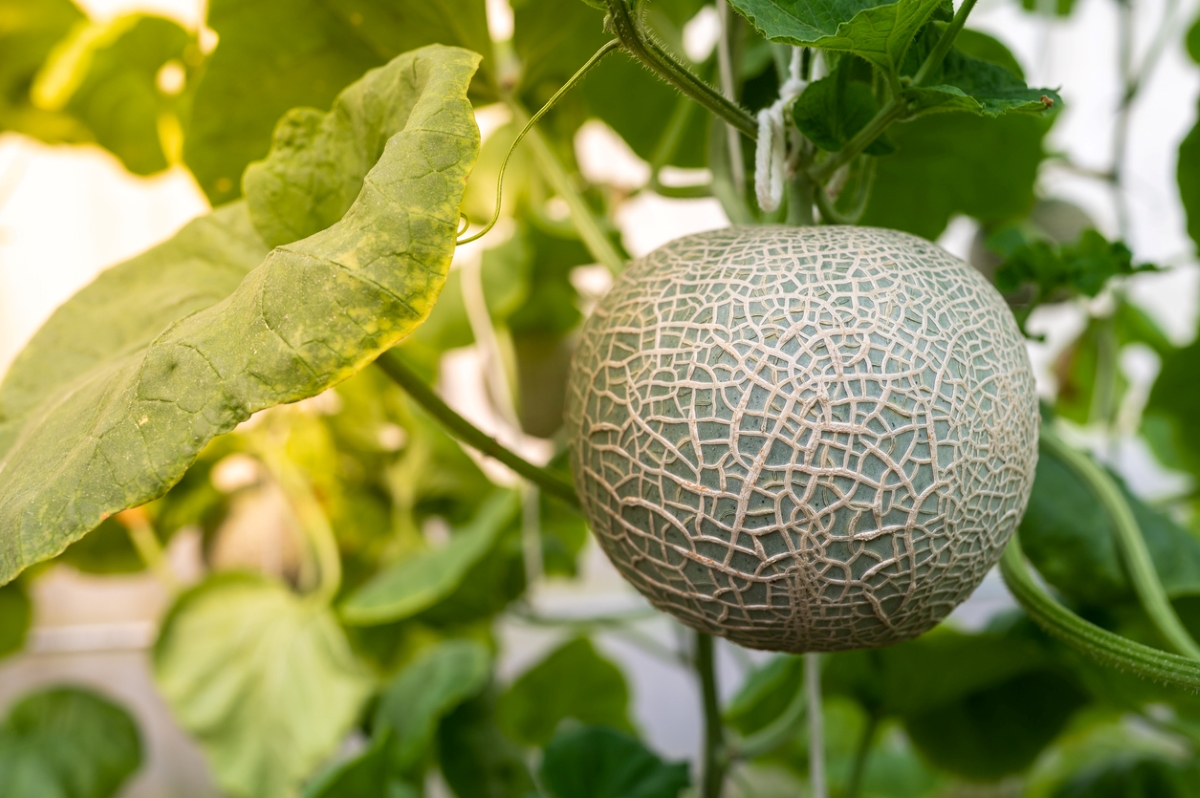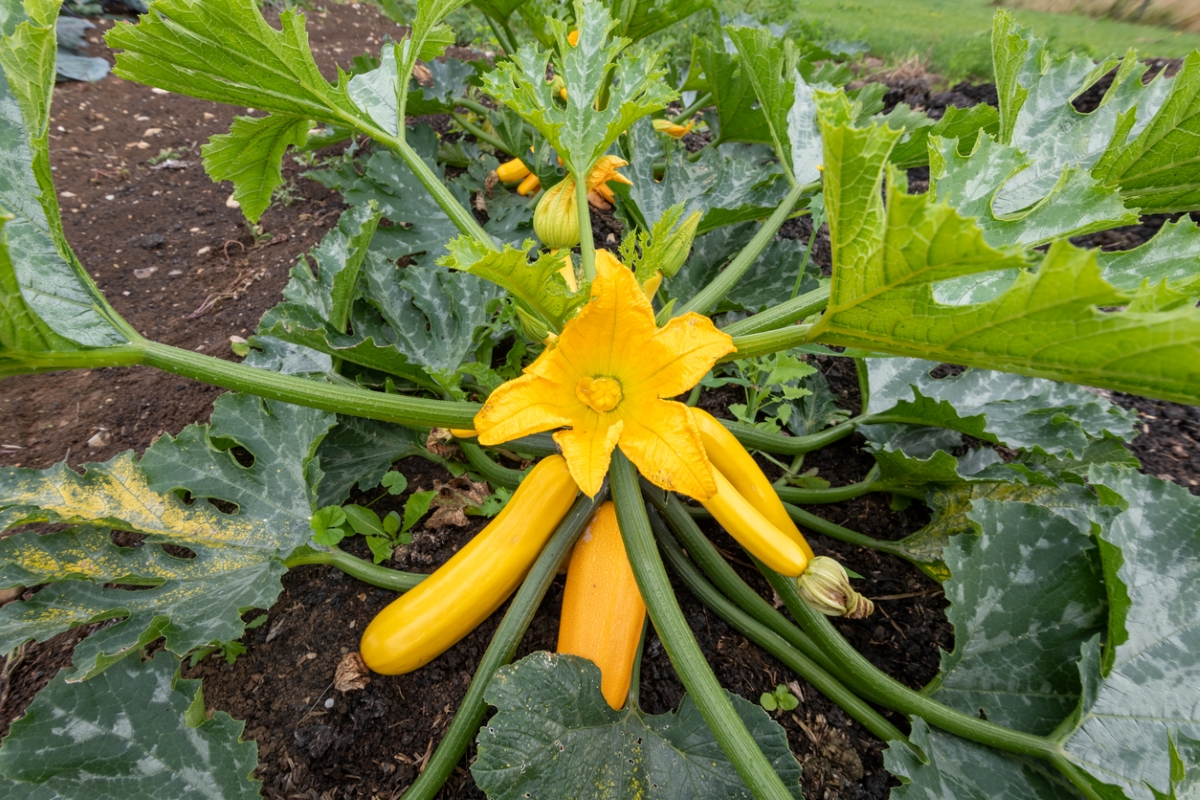

We may earn revenue from the products available on this page and participate in affiliate programs. Learn More ›
When spring warmth and moisture kick in each May, gardeners are ready to plant as soon as their frost dates allow. Yet when considering what to plant in May, avoid species that require a long head start. Lisianthuses, for example, take 140 to 150 days to progress from seed to bloom, so they need to be sown indoors in late winter. However, zinnias often bloom within 75 days, making them ideal plants to direct-sow in May.
You also can expedite growth by starting some flower species from bulbs rather than seeds. As for fruits, herbs, and vegetables, May is a good time to plant fast-maturing types such as beans and plants like melons, which require warm soil to germinate well.
1. Begonia (Begonia x tuberhybrida)

For this May planting guide, let’s begin with begonias and other bulbs to plant in spring. Among the showiest plants for shade, tuberous begonias come in upright-growing or trailing plants 12 to 18 inches tall with asymmetrical leaves and large double blooms or smaller, more shredded-looking posies. If planted after the danger of frost has passed, they should bloom in midsummer and even into early fall, and you can lift their tubers in fall to store them indoors over winter.
Best For: Containers, edging, shade gardens
USDA Zones: Hardy in 9 to 11; annual in others
2. Caladium (Caladium spp.)

Add caladiums to your spring planting list for their colorful foliage. Varying in size from 6 inches to 4 feet, they also brighten up shade with their intricately “painted” arrowhead or heart-shaped leaves. Since they need warm nighttime temperatures and soil (65 degrees Fahrenheit or more), May is a good planting time in most regions. Growers can store their tubers over winter or keep the plants in pots to serve as houseplants for humid rooms during the coldest months.
Best For: Borders, containers, shade gardens
USDA Zones: 9 to 11; annual in other zones
3. Calla Lily (Zantedeschia spp.)

Call on calla lilies for blooms from midsummer through autumn. Varying in height from 1 to 4 feet, they also offer arrowhead-shaped leaves, but theirs are accompanied by elegantly spathe-shaped flowers in a variety of colors. Calla lilies also need warm soil, so plant in May once soil temperatures reach at least 65 degrees Fahrenheit. Although you can dig and store the rhizomes of hybrid callas over winter, plants of common calla (Zantedeschia aethiopica) should be kept growing as houseplants where they aren’t hardy.
Best For: Containers, cutting gardens, rain gardens
USDA Zones: 7 to 10; annual in colder areas
4. Canna (Canna spp.)

When choosing what to plant in spring, select cannas for their canna-do attitude and late summer performance when other flowers are fading. Varying in height from 18 inches to 8 feet, they often offer blazing color in their striped or spattered lance-like leaves as well as in their gladiolus-like blooms. You can store their rhizomes indoors over winter at no colder than 40 degrees Fahrenheit.
Best For: Borders, large containers, rain gardens
USDA Zones: 6 to 10
5. Dahlia (Dahlia spp.)

You’ll also want to dally with dahlias which, like cannas, tend to bloom in late summer and autumn in the coldest zones and may be stored for the winter for planting in the spring the next year. May planting after danger of frost has passed works best, but for earlier flowering, you can start tubers indoors a few weeks before setting them out after the frost. Dahlias vary from 1 to 7 feet, their foliage from simple to compound, and their blooms from single 2-inch types to double 12-inch dinner-plate diameter flowers.
Best for: Borders, cottage gardens, cutting gardens
USDA Zones: 7 to 10; annual in others
6. Gladiolus (Gladiolus spp)

Finally, grab some glads for garden gladness. Varying in height from 1 to 6 feet, gladiolas make sword-shaped foliage and spikes of showy tubular blooms—from bottom to top rather than from the top to bottom of their stems. If started after all danger of frost has passed, they generally will bloom from mid to late summer, after which you can allow them to die back before storing their corms over winter.
Best for: Borders, cutting gardens, flowerbeds
USDA Zones: 7 to 10; store indoors where colder
7. Cosmos (Cosmos spp.)

As we continue this spring planting guide with annual flowers grown from May bulbs or seeds, we’ll want to include cosmos for the “most-est” cultivars. Offering a wide variety of new hues generated in recent years, these plants grow from 2 to 8 feet with ferny foliage and 2 to 4-inch single or double wide-petaled blooms in a wide variety of colors. Easy to grow from seed directly sown in your garden, they should begin to bloom in about 75 days and continue until frost.
Best For: Borders, cutting gardens, flowerbeds
USDA Zones: As an annual in 2 through 11
8. Morning Glory (Ipomoea spp.)

Make your morning more glorious with morning glories, which will need to be planted near a trellis on which their vines of heart-shaped leaves can climb to heights of up to 30 feet. Sow the seeds once May ground temperatures reach 65 degrees Fahrenheit, but don’t expect flowering plants in May. These vines typically don’t unfurl their funnel-shaped 1½- to 6-inch diameter blooms until mid to late summer.
Best For: Containers, fences, trellises
USDA Zones: 9 to 11; annual in others
9. Nasturtium (Tropaeolum majus)

Among other plants for May sowing are large-seeded nasturtiums. They grow quickly and offer “nose-twisting” edible leaves. The leaves are shield-shaped and have a peppery flavor. Spurred, 5-petaled flowers (also edible) bloom for most of the summer. Nasturtiums typically don’t surpass 18 inches high, but there also are vining types that will scramble to 6 feet. Avoid applying much garden fertilizer to them since they prefer to be grown lean for the most profuse flowering.
Best For: containers, salad gardens, vegetable gardens
USDA Zones: Perennial vine in 9 to 11; annual elsewhere
10. Sunflowers (Helianthus annuus)

With rayed flowers like miniature suns, sunflowers are easy to grow, and some may begin to bloom only 60 days after their sowing in the spring (when soil temperatures reach at least 50 degrees Fahrenheit). They reach heights between 1 and 15 feet and produce flowers 2 inches to 2 feet wide. The seeds they also produce make it easy for you to nurture wild birds in autumn without having to put up feeders.
Best For: Cottage gardens, cutting gardens, pollinator gardens
USDA Zones: Annual in 2 through 11
11. Zinnias (Zinnia spp.)

Also offering zippy gratification, zinnias can begin to bloom 75 days after directly sowing May seeds in the garden. They range from 8 inches to 4 feet high and their roundish blooms, which come in cactus and crested as well as classic cultivars, also can vary from under an inch in diameter to 7 inches. According to The New Sunset Western Garden Book, zinnias “do not gain from being planted early; they merely stand still until the weather warms up.” So, list them among your seeds to plant in May.
Best For: Borders, cutting gardens, pollinator gardens
USDA Zones: Annual in 3 through 10
12. Beans (Phaseolus vulgaris)

Our planting in spring guide will conclude with annual vegetables and herbs. Among obvious veggies to plant in May are beans which like heat and won’t stand frost. With their 3-leaved foliage, sweet pea-like blossoms, and long, edible pods, green beans are a good choice for green gardeners, as they are easy to sow and can make crops in as little as 50 days. So you may want to do succession plantings to guarantee yourself a continuing supply, starting when soil temperatures reach at least 55 degrees Fahrenheit.
Best For: Vegetable gardens
USDA Zones: Annual in 2 through 11
13. Borage (Borago officinalis)

An annual herb, borage (reputed to stimulate courage!) should be sown directly into the garden after the danger of frost has passed, since it resents transplanting. Once established, however, it grows to 3 feet and self-sows reliably, so you probably won’t need to plant it again. Valued for its fuzzy cucumber-flavored leaves and edible star-shaped true-blue flowers, it will decorate both your garden and your salads.
Best For: Herb gardens, pollinator gardens, salad gardens
USDA Zones: Annual in 2 through 11
14. Carrots (Daucus carota subsp. sativus)

Caring for carrots is simple, since they don’t take long to mature (about 60 days), though finger types can be ready in 30 days. Cultivars vary in height from 3 inches to 3 feet with ferny foliage and finger-shaped orange or purple taproots that “reach” 1 to 12 inches down into the soil. Typically, they need to be sown a few weeks before the last frost in spring (and again before the first fall frost). In colder zones, plant in early May for a summer crop.
Best For: Children’s gardens, containers, vegetable gardens
USDA Zones: Annual in 2 through 11
15. Cucumbers (Cucumis sativus)

Although “cool as a cucumber” themselves, these vines don’t like chilly temperatures, so you will want to wait until May and warmer soil to sow or plant them. Growing between 8 and 18 inches tall with large hairy leaves and spreading up to 8 feet, they make yellow 5-petal flowers and cylindrical green fruits that generally aren’t picked until they are at least 3 inches long. The vines usually require at least 55 to 65 days to produce a harvest.
Best For: Fences, trellises, vegetable gardens
USDA Zones: Annual in 2 through 11
16. Dill (Anethum graveolens)

Like borage, dill is an annual herb that gardeners should sow directly in the soil, and May is a good time, since the herb prefers temperatures of at least 70 degrees Fahrenheit. The resemblance ends there, however, as dill grows to 4 or 5 feet with ferny foliage and 6-inch clusters of yellow flowers. In addition to its seeds making a dilly of a pickle, the herb’s foliage can be picked and dried for the seasoning called dill weed. Simply let one of the plants go to seed if you want new dill plants to sprout the following year.
Best For: Herb gardens, pollinator gardens, vegetable gardens
USDA Zones: Annual in 2 to 11, can reseed
17. Melons (Cucumis melo)

Melons will be melancholy—and possibly not sprout—if sown during cool weather. Therefore, you probably won’t want to plant these heat-tolerant fruits until a couple of weeks after your last frost date, just to be on the safe side. Some black plastic beneath the vines to absorb the sun’s rays and organic fertilizer should help the plants to grow in May. Muskmelons typically vine from 6 to 9 feet with roundish or shallowly lobed hairy leaves and yellow blooms followed by netted fruits after 75 to 100 days.
Best For: fences, trellises, vegetable gardens
USDA Zones: Annual in 2 to 11, with added heat in colder zones
18. Squash (Cucurbita spp.)

Both summer and winter squash love heat and may be started in May since winter squash doesn’t actually grow in winter. It just stores better during that season than summer squash does. Squash plants vary in height from 1 to 3 feet and sprawl from 2 to 25 feet with large, prickly, often lobed leaves. They produce huge (3- to 6-inch) yellow blooms followed by fruits that vary in size and shape according to type and cultivar. Summer squashes are harvested while still tender (in 50 to 60 days) and winter squashes after they develop a hard rind in 85 to 120 days.
Best For: Vegetable gardens
USDA Zones: Annual in 5 through 10
19. Sweet Corn (Zea mays subsp. rugosa)

Although it might sound corny, folklore advocates that corn be sown when dogwoods are in full bloom. The University of Maryland Extension emphasizes that “super-sweet varieties” should be planted when soil temperatures reach 65 degrees Fahrenheit. The office also says that “Pre-germinating seed before planting in cool, spring soil may help prevent soil rot.” So, if you want your corn to reach its full 5 to 10 feet height and bear those sweet ears, don’t plant it until a couple weeks after your last frost date.
Best For: Vegetable gardens
USDA Zones: Annual in zones 2 through 9
